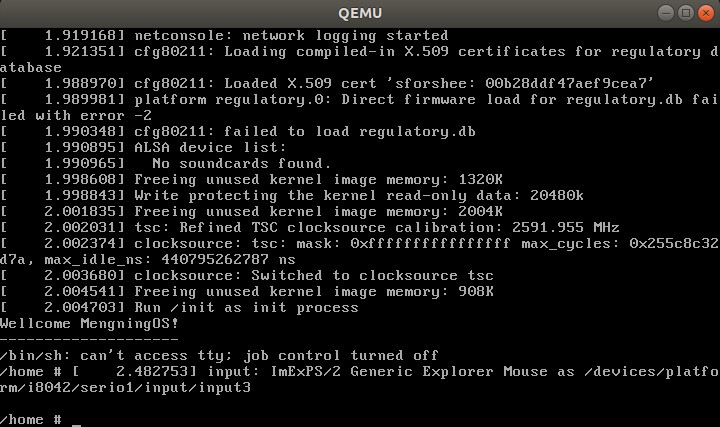一、 搭建Linux内核调试环境
本次实验的目录架构,一个主目录LinuxK,其包含3个文件夹:linux-5.4.34内核文件夹,busybox文件夹和rootfs文件夹。
安装开发工具
sudo apt install build-essential sudo apt install qemu # install QEMU sudo apt install libncurses5-dev bison flex libssl-dev libelf-dev
下载内核源码
# 在linuxK目录下 sudo apt install axel axel -n 20 https://mirrors.edge.kernel.org/pub/linux/kernel/v5.x/ linux-5.4.34.tar.xz xz -d linux-5.4.34.tar.xz tar -xvf linux-5.4.34.tar cd linux-5.4.34
配置内核选项
# 在linux-5.4.34目录下 make defconfig # Default configuration is based on 'x86_64_defconfig' make menuconfig # 打开debug相关选项 Kernel hacking ---> Compile-time checks and compiler options ---> [*] Compile the kernel with debug info [*] Provide GDB scripts for kernel debugging [*] Kernel debugging # 关闭KASLR,否则会导致打断点失败 Processor type and features ----> [] Randomize the address of the kernel image (KASLR)

编译运行内核
#在linux-5.4.34目录下 make -j$(nproc) # nproc gives the number of CPU cores/threads available # 测试⼀下内核能不能正常加载运⾏,因为没有⽂件系统终会kernel panic qemu-system-x86_64 -kernel arch/x86/boot/bzImage # 此时应该不能正常运行

制作根文件系统
电脑加电启动⾸先由bootloader加载内核,内核紧接着需要挂载内存根⽂件系统,其中包含必要的设备驱动和⼯具,bootloader加载根⽂件系统到内存中,内核会将其挂载到根⽬录/下,然后运⾏根⽂件系统中init脚本执⾏⼀些启动任务,最后才挂载真正的磁盘根⽂件系统。我们这⾥为了简化实验环境,仅制作内存根⽂件系统。这⾥借助BusyBox 构建极简内存根⽂件系统,提供基本的⽤户态可执⾏程序。
# 在busybox目录下 axel -n 20 https://busybox.net/downloads/busybox-1.31.1.tar.bz2 tar -jxvf busybox-1.31.1.tar.bz2 cd busybox-1.31.1
注意:由于与gcc兼容性问题,不要去官网下载busybox,可用在https://github.com/mirror/busybox 下载 busybox。
make menuconfig #记得要编译成静态链接,不⽤动态链接库。 Settings ---> [*] Build static binary (no shared libs) #然后编译安装,默认会安装到源码⽬录下的 _install ⽬录中 make -j$(nproc) make install
#制作内存根文件系统镜像 # 在linuxK目录下 mkdir rootfs cd rootfs cp ../busybox-1.31.1/_install/* ./ -rf mkdir dev proc sys home sudo cp -a /dev/{null,console,tty,tty1,tty2,tty3,tty4} dev/
准备init脚本⽂件,放在根⽂件系统跟⽬录下(rootfs/init),添加如下内容到init⽂件中
#!/bin/sh mount -t proc none /proc mount -t sysfs none /sys echo "Wellcome MyOS!" echo "--------------------" cd home /bin/sh
#在 rootfs 目录下 给init脚本添加可执⾏权限
chome +x init
# 在 rootfs目录下,打包成内存根⽂件系统镜像 find . -print0 | cpio --null -ov --format=newc | gzip -9 > ../rootfs.cpio.gz # 测试挂载根⽂件系统,看内核启动完成后是否执⾏init脚本 qemu-system-x86_64 -kernel linux-5.4.34/arch/x86/boot/bzImage -initrd rootfs.cpio.gz

此时,完成内核调试环境的搭建。
二、跟踪调试Linux内核